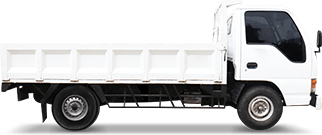
Inbound logistics in supply chain management is more than just a standard process; many businesses don’t fully understand its importance or how to optimize their inbound processes. The Transportify blog dives deep into the inbound logistics definition and explores why it deserves a strategic focus within businesses.
The Inbound Logistics Definition
Inbound logistics definition is not as simple as managing the movement of goods into your business. As one of the types of logistics, it covers the various steps involved in getting raw materials, components, and finished products from your suppliers to your warehouses or distribution centers.
All came from Inbound Logistics
In simpler terms, inbound logistics handles everything related to bringing in the stuff your business needs to operate. This includes sourcing and ordering materials from vendors, arranging transportation to pick up and deliver those items, receiving shipments when they arrive at your facilities, and storing that inventory until it’s needed for production or distribution to customers.
Always Delivers Right
Effectively managing your inbound logistics ensures you have the right products, in the correct amounts, in good condition, and at the right place at the right time. This allows your inbound operations to run smoothly and keeps your customers happy by having what they need in stock. Proper inbound logistics processes are key to keeping your business’s supply chain functioning efficiently.
Strategic Importance of Inbound Logistics
Inbound logistics plays a tremendously important strategic role in effective supply chain management. It represents the critical first step that sets the stage for how well a business can fulfill customer demand down the line. By really optimizing and mastering their inbound logistics operations, companies can reap some huge benefits:
Cost Savings
Running an efficient inbound logistics system minimizes waste, cuts down on expensive storage needs, and can significantly reduce overall transportation expenses.
Greater Efficiency
Streamlining the inbound processes ensures goods get processed quickly and seamlessly transitioned to the next stage of the supply chain without delays.
Stronger Supplier Partnerships
When inbound logistics run smoothly, ordering patterns become more predictable and reliable, which strengthens relationships with suppliers.
Higher Customer Satisfaction
Having products readily available when needed because of smooth inbound logistics translates to faster delivery times and happier customers.
Key Activities in Inbound Logistics through Transportify
The inbound logistics process with Transportify encompasses several crucial activities that are essential for getting raw materials, components, and inventory efficiently into your supply chain. These key activities help ensure the smooth flow of goods from suppliers into your business operations. Let’s take a look at the major inbound logistics activities the Transportify can offer you:
Procurement
Procurement logistics activity, as part of inbound logistics, involves handling the sourcing and acquisition of all the raw materials, components, and other goods a business needs from suppliers. Placing purchase orders, negotiating contracts that cover pricing, quality standards, transportation requirements and delivery timelines, as well as building and maintaining positive working relationships with a company’s valued suppliers through clear communication and collaboration.
Transportify’s role in procurement activities allows businesses to gain a powerful advantage in enhancing their overall inbound logistics process. As a leading logistics provider, Transportify specializes in coordinating and managing the actual transportation of inbound goods from suppliers through a variety of vehicle offerings. This will be further emphasized on the next section.
Transportation Planning
Coordinating the movement of inbound shipments from suppliers through various transportation modes like land. sea, and air freight transportation. This includes load planning and routing. Transportify that can offer you a variety of vehicles to choose from depending on your transportation needs, can transport long hauls, via roro shipment, and even cargo forwarding through air freight. Check the list of vehicles you can use from Transportify below.
Vehicle Type Dimensions/
Weight LimitsBase Price
(Metro Manila)Base Price
(Outside Metro Manila) Base Price
(Visayas/Mindanao) Wing Van
Wing Van 32 to 40 x 7.8 x 7.8 ft
12000kg to 28000kg7000 PHP 6500 PHP 6500 PHP ![]() 6w Fwd Truck
6w Fwd Truck18 x 6 x 7 ft
7000kg4850 PHP 4850 PHP 4850 PHP  Closed Van
Closed Van10 to 14 x 6 x 6 ft
2000kg to 5000kg1600 PHP 1450 PHP 1450 PHP  Open Truck
Open Truck10 to 21 x 6 ft x open
2000kg and 7000kg2300 PHP 1950 PHP 1950 PHP  L300/Van
L300/Van8 x 4.5 x 4.5 ft
1000kg415 PHP 374 PHP 335 PHP  Small Pickup
Small Pickup5 x 5 ft x open
1000kg418 PHP 338 PHP 325 PHP ![]() Light Van
Light Van5.5 x 3.8 x 3.8 ft
600kg375 PHP 292 PHP 275 PHP ![]() MPV/SUV
MPV/SUV5 x 3.2 x 2.8 ft
200kg240 PHP 210 PHP 160 PHP ![]() Sedan
Sedan3.5 x 2 x 2.5 ft
200kg220 PHP 190 PHP 140 PHP
Shipment Receiving
When inbound orders arrive at your facilities, this activity covers shipment inspection, unloading, verifying quantities, and processing receipt documentation. Transportify usually does this upon arrival at your pick-up location. The necessary documentation was specified, and if your delivery requires POD, Transportify can handle it for you.
Inventory Management
Overseeing inventory replenishment and levels of raw materials and components through tracking systems, cycle counting, and managing putaway, storage, and retrieval processes. Transportify can do manual sorting and counting with the items you need to deliver as an extra service that you can avail of.
Materials Handling
Physically moving, sorting, and storing inbound goods within warehouses or distribution centers using appropriate equipment like push carts, equipped with PPEs, and other tailored solutions for your needs that Transportify can give you as your reliable logistics provider.
Quality Control
Implementing checks and processes to ensure inbound products meet your organization’s quality standards before going to production or distribution has been an inevitable part of inbound logistics.
By expertly executing these key inbound logistics activities in a streamlined, integrated fashion, businesses can maintain optimal inventory levels while reducing costs and delays throughout their end-to-end supply chain operations.
Inbound Logistics with Business Success
The connection between well-coordinated inbound logistics and business success is evident in numerous aspects of company operations. Businesses that excel in this area can significantly reduce the risk of inventory shortages, minimize overstock situations, and manage their inventory more precisely. This not only reduces operational costs but also improves the overall market responsiveness and competitiveness of the business.
SEE ALSO:
- Three Types of Logistics Explained: Inbound, Outbound, Reverse
- What Is Outbound Logistics? Things To Know About the Process
- Reverse Logistics Importance: Why You Shouldn’t Neglect It?
Inbound Logistics for Competitive Advantage
Businesses that leverage their inbound logistics capabilities effectively often gain a competitive edge in their markets. This advantage manifests through enhanced agility, better customer service, and the ability to adapt to market changes swiftly. For instance, a company that can quickly process and distribute goods inbound from suppliers can respond more rapidly to customer demands, a crucial factor in customer retention and satisfaction.
Inbound logistics definition and its strategic importance in supply chain management, directly impacting cost, efficiency, and customer satisfaction. By understanding its strategic importance and implementing robust logistics strategies, businesses can not only overcome challenges but also gain a substantial competitive advantage.
 | or |




 INSTANT QUOTE
INSTANT QUOTE

 Chat
Chat